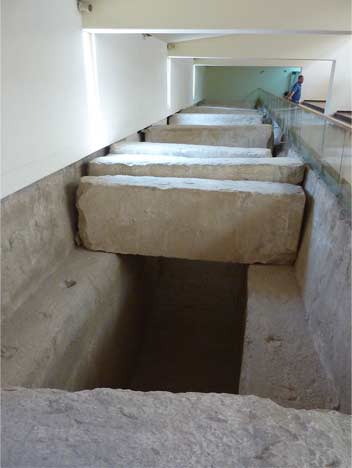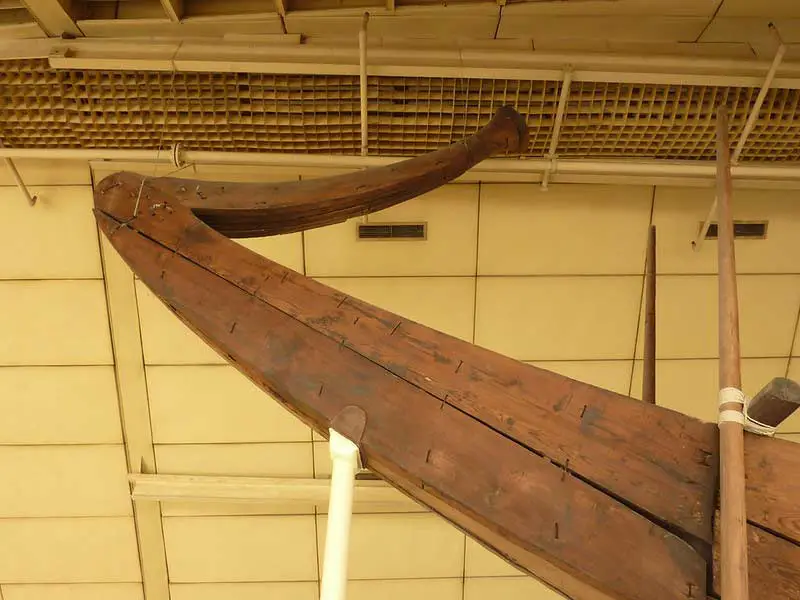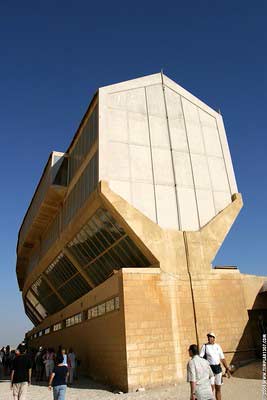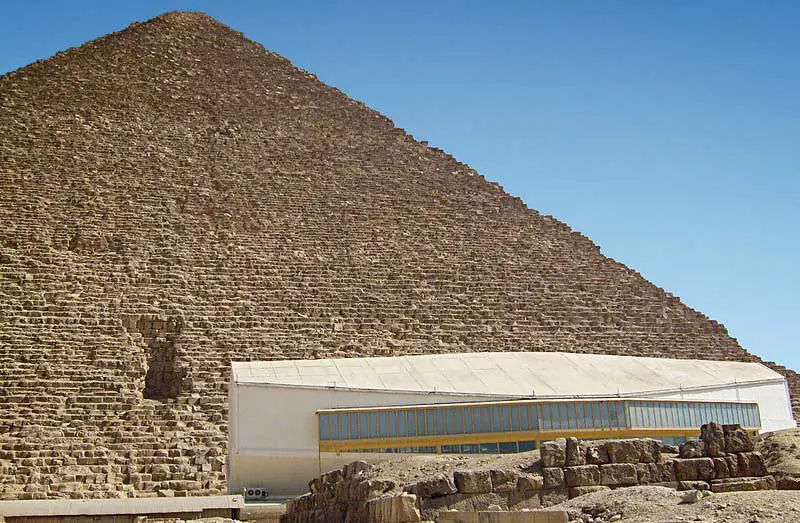khufu ship
In early May of 1954, engineer and archaeologist Kamal el-Malakh was clearing rubble near the Great Pyramid of Giza. During his work, he uncovered three carefully dug pits. In one of them was an object that would be called one of the most significant discoveries of the 20th century -- the oldest complete boat in the world, known as the Khufu Ship.
The Discovery
El-Malakh's discovery in 1954 was a sun barque, a "solar ship" in imitation of the one used by the sun god Ra to traverse the sky each day. It was buried where Khufu's spirit could easily access it to join Ra on his daily journey. The ship had been disassembled (presumably for preservation purposes) into 1,224 pieces and laid out neatly in a way that indicated its final, assembled form.
When reassembled by restorers, the ship became something of a mystery. It had no room for either sails or oars. Even so, there appears to be ancient water damage on the flat underside of the vessel. This indicates that the ship was used in one of two ways. It could have been used by Khufu himself on his many pilgrimages to sacred sites along the Nile. Alternatively, it could have been used to bear Khufu's body to its final resting place in the Great Pyramid of Giza, which he commissioned during his lifetime.

© Hannah Pethen - The pit of Khufu's boat
Details and the design of the ship
While facts about the Khufu Ship are sparse, enough details survived to allow modern archaeologists to reassemble the ship. It measured 19 feet (5.9 meters) wide and 142 feet (43.4 meters) long. As a flat-bottomed ship, it had no keel in the traditional sense. So precise was its construction that many archaeologists believe it would still float if put in the water today.
The ship had no mast and therefore used no wind power. This is perhaps because servants were meant to pull it by ropes from the shore, or because such boat specifications were not needed in the afterlife. It was constructed primarily of cedar from what is now modern-day Lebanon. Nails and pegs were not used in its construction. Instead, pieces called tenons were made with the vine of the garland thorn plant. Other pieces of the ship were bound together with braided Halfah grass.

© Nina Hale - The Solar Boat
The Purpose and the Function of the Ship.
What exactly it was used for, or even the way in which it traversed, have been lost to history. However, the circumstances of its discovery reveal some clues. Since it was buried in the same way as other funerary items, one can surmise it was meant for use in the afterlife. It's similarity to the iconography of Ra's sun barque indicate it would have had a similar use for the dead pharaoh.
The existence of water damage reveals both its use by the living and its functionality as a seaworthy vessel. Little else is known, except that the vessel was probably buried at the same time the pharaoh was entombed in the Great Pyramid.

© Hannah Pethen - The Stern of the Solar Boat of Khufu
The Ship's Significance
At different points in Egyptian history, the pharaoh was associated Osiris, the god of the agriculture, fertility, the afterlife, and resurrection. At other times, he was associated with the sun god, Ra. The Khufu Ship was meant to associate Khufu with Ra, who, as the sun, travelled across the sky each day.
It was Ra who warmed the people, gave them light, and allowed the crops to grow. The pharaoh did the same for his people, according to the myths set down by his priests. Even in death, the pharaoh was divine. Ra was the father of most of the other gods in the Egyptian pantheon. Therefore, all beneficial things, from fertile fields to personal blessings and protection, flowed directly from him.
Conservation and Preservation
It took about 20 months to excavate every piece of the disassembled ship from its resting place just south of the Great Pyramid. After that, nearly a decade of research was required before reassembly was even attempted. Helping restorers were special hieratic marks on the pieces that indicated their place in the finished vessel. Still, work was painstaking, with restorer Hajj Ahmed Youssef and his team taking a total of 14 years from the research period to the actual reconstruction.
Special care was taken to use the same materials as the original whenever possible. Reassembly took place in a special brick reconstruction shed next to the pit in which the pieces were found.

© Benjamin - Khufu Boat Museum
Public Access and Exhibition
The ship's new resting place is the Grand Egyptian Museum on the edge of Cairo, where it will be viewable by the public. The museum is set to open in late 2023, featuring the ship and many other artifacts from different periods in Egypt's history.

© zolakoma - The Great Pyramid and the Solar Boat Museum
Bibliography
- The Boat Beneath the Pyramid: King Cheops' Royal Ship
- Guide to the pyramids of Egypt
